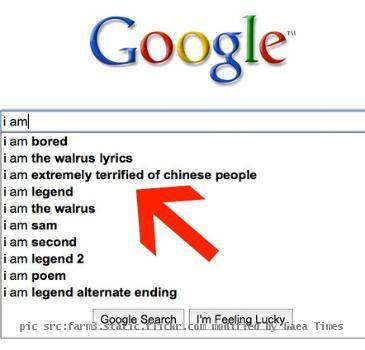New undersea cables bring hope of cheaper, more reliable Internet access for West Africa
By Tom Maliti, APMonday, August 30, 2010
New cables tie West Africa closer to Internet
LAGOS, Nigeria — For a decade, West Africa’s main connection to the Internet has been a single fiber-optic cable in the Atlantic, a tenuous and expensive link for one of the poorest areas of the planet.
But this summer, a second cable snaked along the West African coastline, ending at Nigeria’s commercial capital, Lagos. It has more than five times the capacity of the old one and is set to bring competition to a market where wholesale Internet access costs nearly 500 times as much as it does in the U.S.
It’s the first of a new wave of investment that the U.N.’s International Telecommunications Union says will vastly raise the bandwidth available in West Africa by mid-2012.
“Africa is sort of the last frontier here,” said Paul Brodsky, an analyst at the research firm TeleGeography in Washington.
The effects are already being felt in Ghana. Kofi Datsa, general manager of Internet service provider DiscoveryTel Ghana, said it has seen the monthly cost of the access it buys from larger telecommunications carriers drop more than a quarter to $1,625 per megabit per second, from $2,250, in recent months. The carriers, fearing they could lose customers, have started cutting prices ahead of the new cables landing in the country.
Datsa expects his bandwidth costs to drop further in a couple of months, to $350 per megabit per second. By the end of 2011, when two other cables will have gone live, that could go as low as $225, he believes.
But that’s still high. In the U.S. and Europe, wholesale Internet connections cost $5 to $10 per megabit per month in major cities, according to research firm TeleGeography.
It’s not clear exactly when the cheaper prices will trickle down to the consumer level, but Datsa expects that to happen fairly quickly, as there’s plenty of competition, with 25 registered ISPs in the country.
According to the Ghana Internet Service Providers Association, a typical DSL package costs $32 a month, about two-thirds of the average monthly income in the country. It’s far slower than DSL service in the U.S., which costs about the same.
The ITU found that 32 million sub-Saharan Africans, or 3 percent, had Internet access in 2008 — the latest figure available. But that number was growing at almost twice the world average rate.
“Internet growth in Africa has been phenomenal and has not shown any signs of being diminished by the worldwide slump in the economy,” said Prince Radebe of South Africa’s Telkom SA, which has a stake in the older cable. “The investment in international submarine cables will further unlock this growth.”
Even with added international communications capacity, Africa still faces another problem: In many places, it doesn’t have the fiber cables necessary to carry the signal from the shores inland, said Abiodun Jagun, a lecturer at South Africa’s University of Witwatersrand.
And in the countries where there is an expansive network of terrestrial fiber optic cables, such pipes are controlled by telecommunications operators that close them to rivals or charge a hefty premium for Internet traffic.
“There is this mentality, this monopolistic mentality that is hardwired into telecom operators,” Jagun said.
Cell phones can help bring Internet access into the hands of consumers, but even wireless networks are dependent on long-haul fiber-optic cables, as the signal travels over the air only for a few miles.
The old cable connecting West Africa to the world, called South Atlantic Telecommunications Cable Number 3/West African Submarine Cable, or SAT-3, is controlled by incumbent telecom operators.
The new $250-million MainOne cable is owned by a consortium of Nigerian banks and financial institutions, South African investors and other African entrepreneurs, none of whom are telecommunications operators. The cable, which has a maximum capacity of 1.92 terabits per second, went live in Ghana and Nigeria last month and has several branching points along the West African coastline ready to connect six other countries.
The other cables in the works are Glo 1, which is owned by Nigerian mobile phone service provider, Globacom Ltd. It will connect Nigeria and its neighbor Ghana with Europe and is expected to go live this year. South Africa-based mobile phone company, MTN Group, is leading another project called West Africa Cable System, which is scheduled to be completed next year. France Telecom is leading another consortium, Africa Coast to Europe, whose cable should be completed mid-2012. And on the eastern Africa coast, it is leading a separate submarine cable project — LION 2.
Apart from extra capacity, the new cables will bring much-needed reliability to communications in Africa. Undersea cables are prone to being damaged by fishermen and earthquakes and take weeks to repair. When SAT-3 broke last summer, it took several countries completely offline for a while, and Nigeria lost 70 percent of its international capacity as it fell back on satellite connections, which are slower and even more expensive than SAT-3.
With multiple cables, French-speaking Senegal may be able to expand its outsourced call centers, and English-speaking Ghana would have a better chance of implementing its plan to get into that business.
Joseph Mucheru, Google Inc.’s regional lead for sub-Saharan Africa, sees great opportunities for West Africa with improved communications, despite the problem of finding enough skilled workers, the lack of security and other challenges.
“I would, however, say all this is outweighed by the opportunities West Africa presents,” Mucheru said. “A vibrant, youthful population and thirst for growth and great technology adaptation.”
Tags: Africa, Ghana, Lagos, Nigeria, North America, South Africa, Southern Africa, United States, West Africa, West Africa-internet

